When I was researching places to visit in Vanuatu, the island of Malekula stood out as a definite must-see; it seemed to tick lots of preference-boxes – hiking, culture, scenery, history. I’ll write other posts about these aspects specifically, but I ended up spending 7 days on the island and, maybe it’s because it was the first island I visited outside the capital Port-Vila, I was particularly awed by my experiences there and my observations of what locals refer to as ‘island life’; while I’m concentrating here on Malekula it’s pretty much true for the other two lesser islands I visited on my trip too – Gaua and Ambrym.
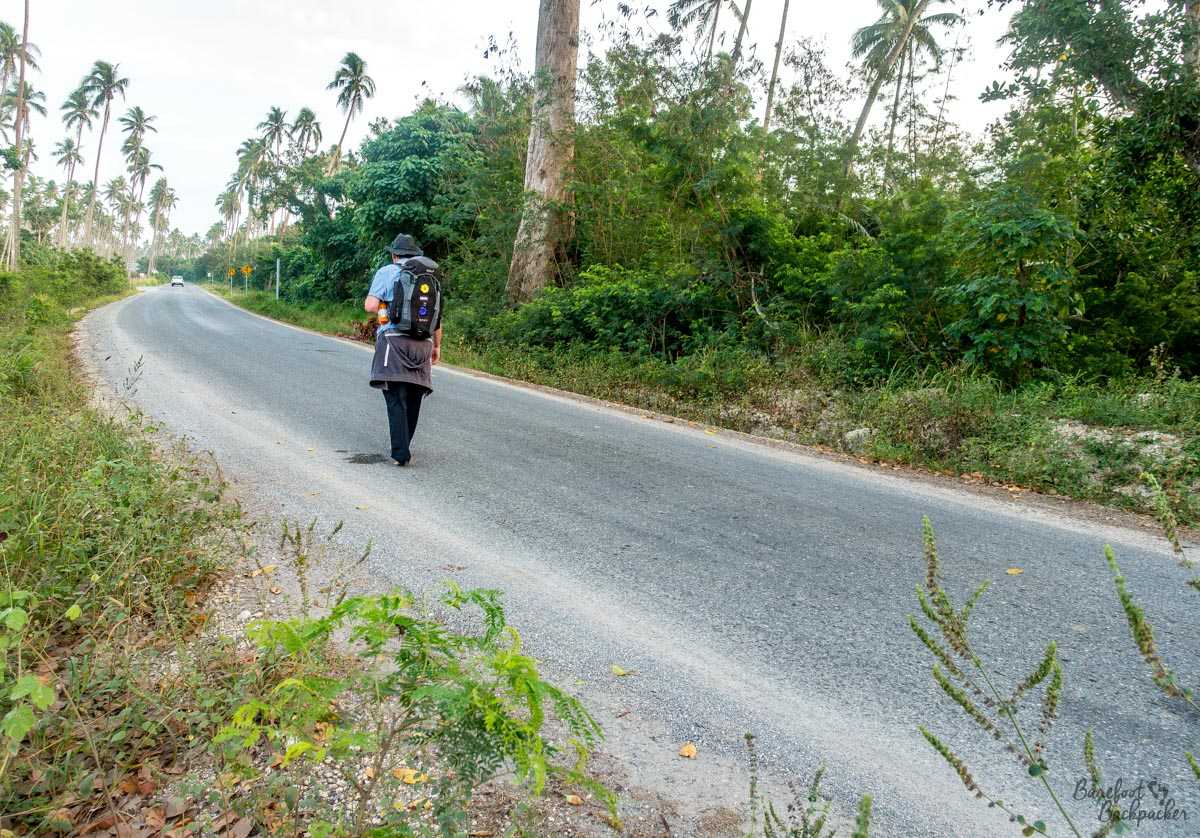
The main road along the East Coast of Malekula, between Norsup and Lakotoro. If you pass more than two trucks, it’s rush hour.
I’ll start with getting there. As airports go, Norsup, in the north of the island, is a little … unlike most airports most of you have been to. Up until my arrival there, the smallest airport I’d been to was La Rochelle in France; the chap takes the luggage off the plane in a wheelbarrow and you walk with him to the terminal building where, in a room with a similar vibe to a sports changing room – plain walls lined with those wide flat benches made of slats – he puts the luggages on the benches and you pick it up and walk out with it. Norsup is similar but dispenses with the terminal building.
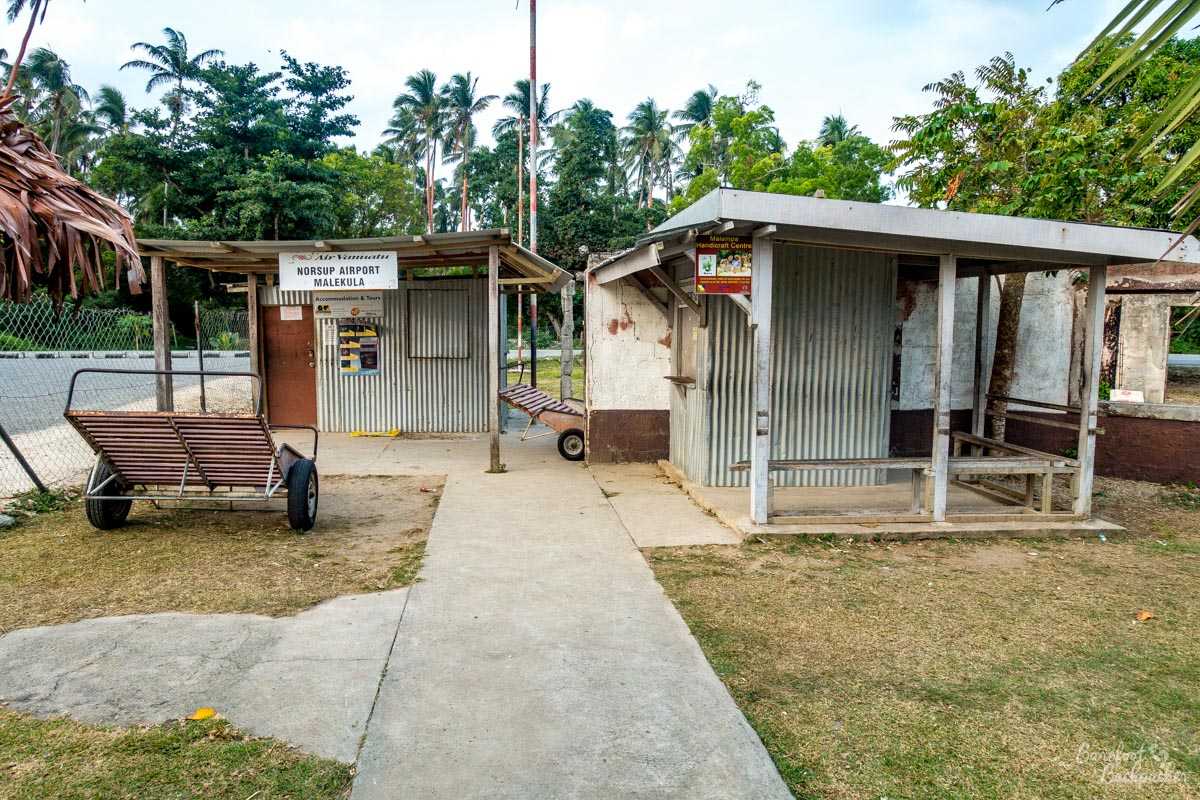
The terminal ‘building’ at Norsup airport.
There is what appears to be the ruins of some kind of small building; the frame of the walls is there and you can make out where the doorways were, but there’s no roof or, well, anything much. The only thing there is are two small stone cabins; one a small kiosk where you pay a 200VT ‘departure tax’ before you get your boarding pass (a small piece of laminated plastic that the same woman collects from you when the pilot calls you aboard the plane), and an office where you check in that’s no bigger than a bedroom yet still contains space for an enormous amount of luggage, parcels, a desk, and a weighing machine (for humans, as well as big bags).
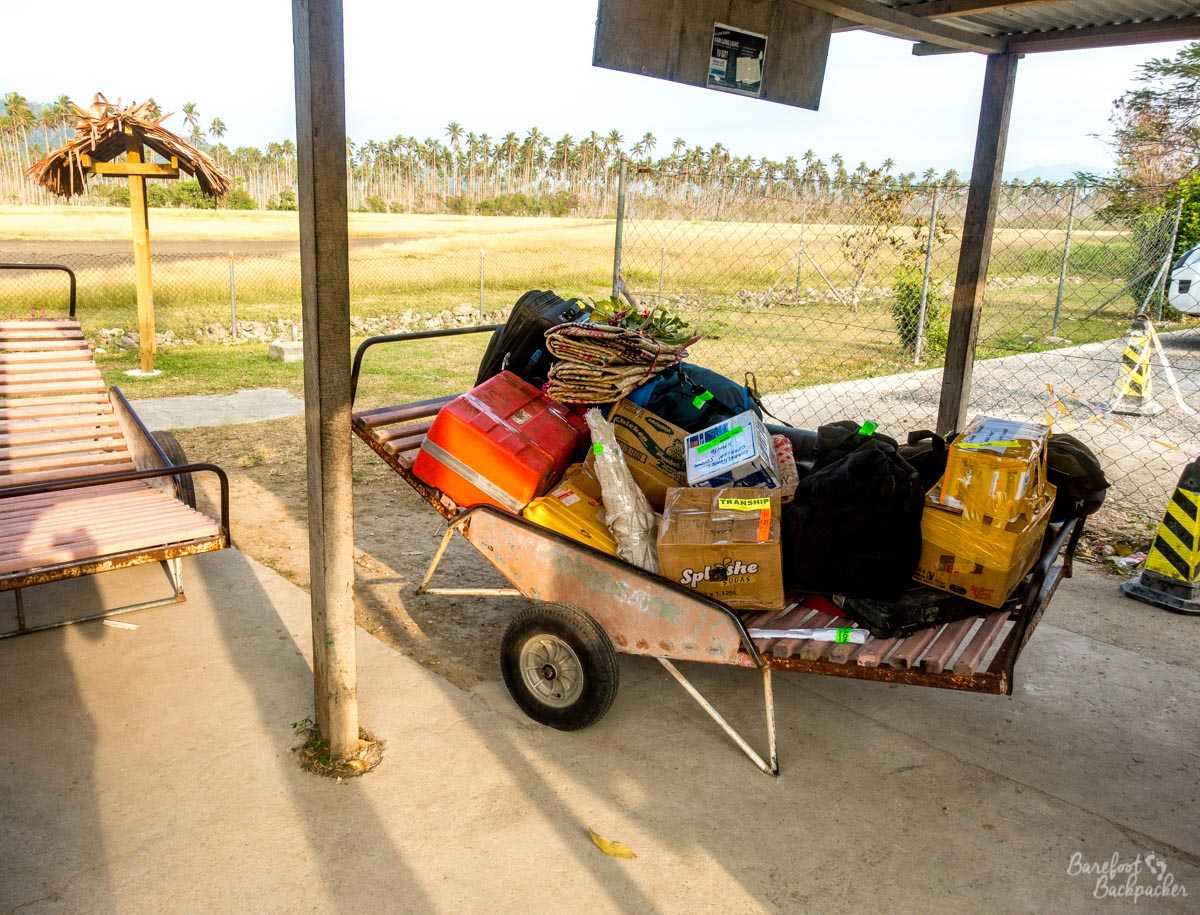
Baggage check-in and reclaim at Norsup Airport.
The weighing machine is important, apparently; each item of cargo is weighed on it and noted. All travellers are also weighed; this happened to me the first time flying out of Port Vila to Norsup, and I found it unusual; after the first flight, on a 19-seater twin-engined jet, one of whose emergency exits was through the cockpit, and where it was possible to have an aisle and a window seat at the same time, I assumed they weigh you so they can assign you a seat to balance the weight of the plane, but on my flight out of Norsup I wasn’t even given a seat number; I could just choose a seat.
There also appeared to be no regulations or checks on hand luggage – once you checked in you were, literally, ready to go. But before you think about taking all manner of stuff on the flight, be aware there are no luggage racks so everything has to be small enough to fit in the seat in front of you.

An aeroplane standing on the runway at Norsup Airport – the standard 19-seater jet that services most of the island. The gravel runway heads off to the right.
The airport itself is a gravel track runway in the middle of a field, by the sea but otherwise surrounded by dense forest. Indeed from above the island looks like 90% forest. The only indications from ground level that there’s an airfield here is a windsock by the side of the road, and a couple of small signs inside the, I’m going to say terminal ‘area’ rather than building.
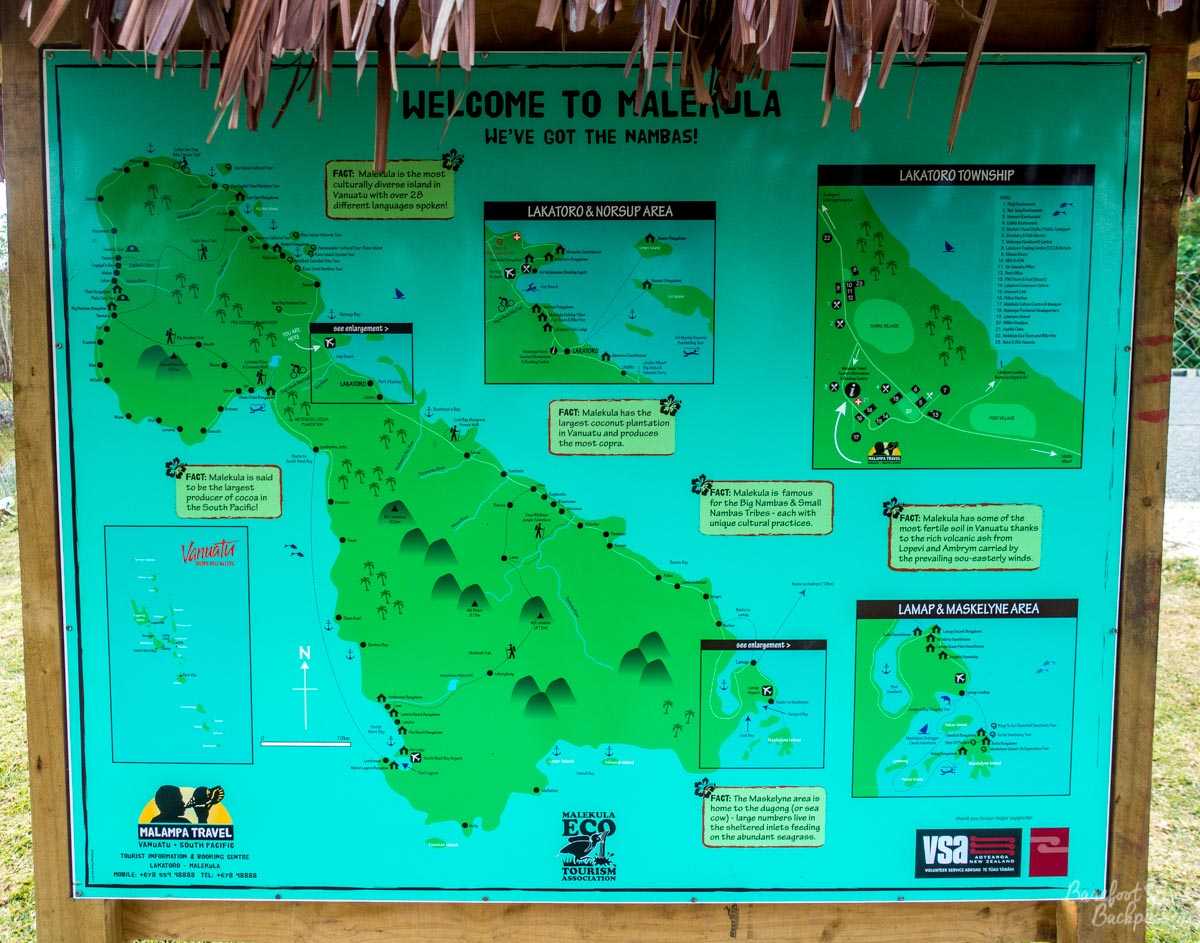
A map of Malekula. Though there seem to be a lot of villages listed, many of them literally only have a couple of houses, and even these are set back off the road and partially obscured by the trees. And no signs telling you where you are.
Malekula as a whole is equally as low-key. The population of the entire island is estimated at 23,000, though most people live in scattered remote villages. The only settlements of any note are Lamap in the far south-east, and Lakotoro in the north-east and the one served by Norsup airport. Given that Malekula has three airports (the third being at South West Bay, and presumably exists because no roads of any significance go that way), and Norsup is the most important, one imagines the other two airports to be … somewhat smaller.
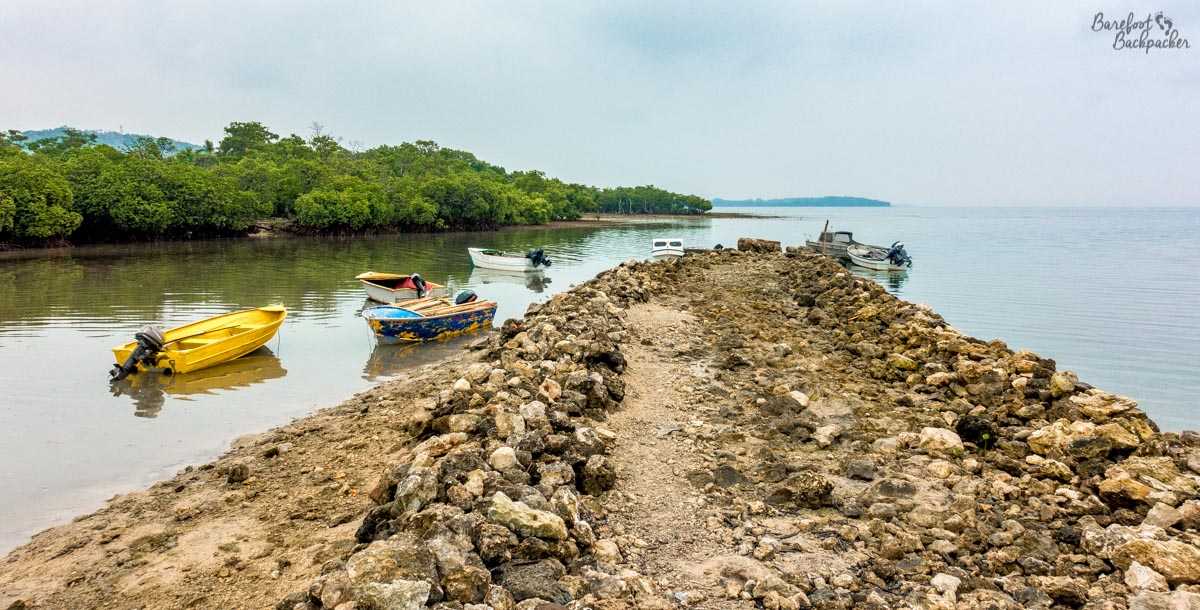
It’s not just the airport that’s low-key; this is the port & wharf of Lakotoro, from where you can get “ferries” to the smaller islands just offshore.
The first thing that becomes evident is that there are no signposts. Not even the airport is signposted, barring a small ‘plane’ sign hidden at the nearby roundabout. Granted there are very few roads, but there’s no indication where any of them go, not even from the airport (there’s a small map of the island in the terminal area, but while it identifies village names, the roads themselves don’t). The only reason you know you’re in Lakotoro is because you see a shop on the left, in a small strip-mall, calling itself Lakotoro Supermarket, along with a bank, a couple of admin buildings, and the multi-purpose Air Vanuatu ofice/Post Office/Financial Services Office. This isn’t even the centre of Lakotoro; that’s another km further down the road and the area in between has plantation on one side and forest/hill on the other. Urban sprawl never looks like this in the UK.
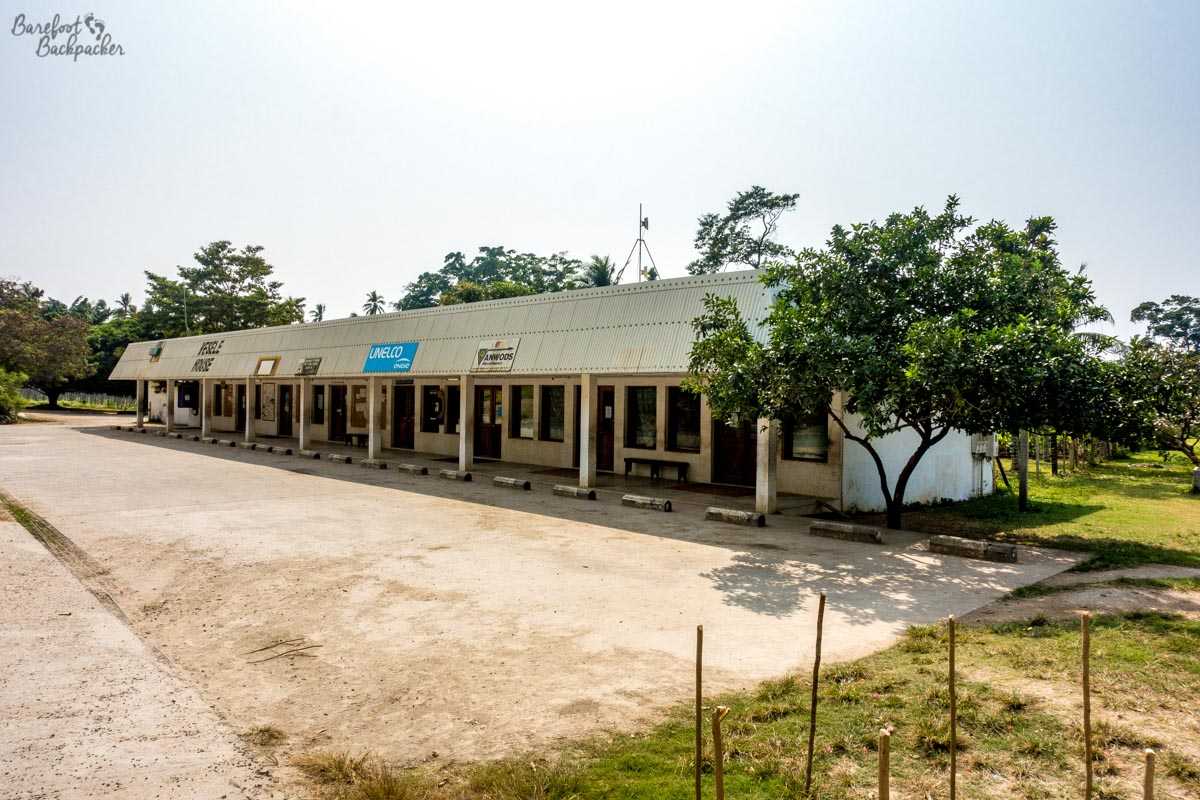
Strip-Mall in northern Lakotoro, complete with alleged supermarket.
Lakotoro Supermarket is one of those interesting shops you only ever hear about in, shall we way ‘outdated’, literature. It consists of five wide aisles, usually six or seven locals congregating around the checkouts making it hard to tell who works here and who’s just a friend, and … nothing else. The shop is almost completely empty, and seemingly this is always the case. On my visit I found a small section of one aisle devoted to selling, of all things, plumbing joints, and a couple of shelves of crisps by the checkouts, and nothing else at all. Fortunately the centre of Lakotoro has a couple more shops (and there’s also one about halfway between the two ‘centres’), all selling the same peculiar combination of water, tins of tuna, small-scale DIY stuff (but not superglue), a few clothes, and, behind a glass cabinet, beauty products like face-cream and toothpaste.
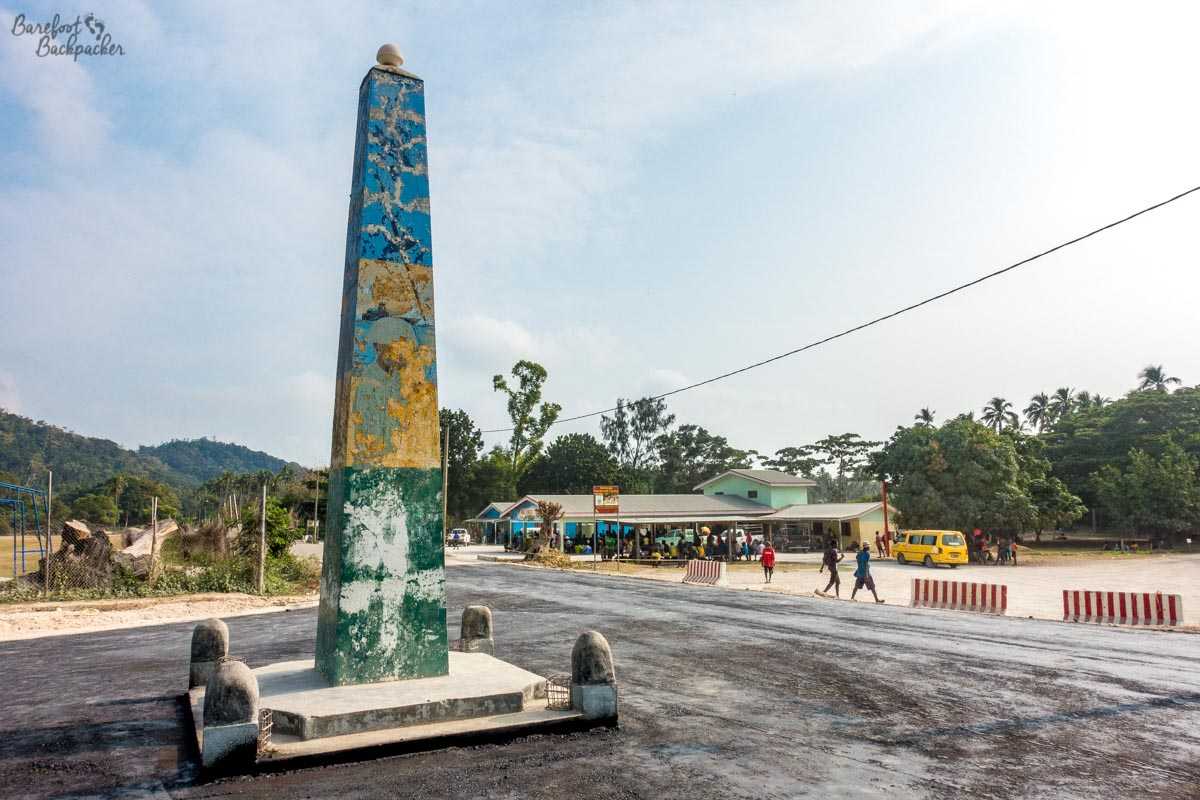
Lakotoro town centre; market in background.
In addition, the whole town comes to a stop at the weekend. The businesses close anyway, and most of the shops shut about lunchtime on Saturday, and don’t reopen until the Monday. At a push, there’ll be somewhere open that you can buy water from, but don’t expect to do the weekly shop. I’d like to say that there’s a religious reason to this – the island seems to be split between traditional Christians and Seventh-Day-Adventists – but in truth I suspect it’s just an example of the laid-back island lifestyle people seem to have adopted across Vanuatu. The local people talk of ‘island time’, which is similar to the West African concept of time (“Hakuna Matata”, indeed). Things will happen; you will get to your destination; the tour guide will come; don’t worry about the ‘when’, just relax and let things be. It’s best not to make time-dependent plans; take a book, sit and enjoy the scenery, and just let life take you where it’s going.

The main road near Lakotoro town centre. Note the trees and the background mountain – Malekula is a very hilly island with dense jungle growth.
This laid-back approach extends to driving. I don’t mean a lax approach to driving (indeed I was told a punitive anti-drink-drive law had recently come into force that fineed drivers upwards of 300,000 Vatu – around £2000 – if they’re caught drink-driving), rather I mean that if you’re walking down the road in Malekula, every single car that passes you will honk their horn and wave at you. People piled on to the backs of the 4×4 trucks will all shout their greetings as you pass by. And the reverse is true – the people walking on or working at the roadside all wave back, even to other pedestrians. A few years ago, Vanuatu was voted ‘the world’s happiest country’; this is one example as to why. It certainly feels that everyone is friendly and open, but not creepily so – it’s a genuine demeanour, and not one designed to lure cash out of you. The drivers will offer you lifts (for the right price, of course; this is one place where hitchhiking is both incredibly easy yet technically doesn’t exist, as the line between minibus, taxi, and private vehicle is incredibly vague) if they pass you, yet there’s none of the SE Asian ‘touting’ that goes on – a friendly wave and a little chat and they’re on their way with no pressure or hard feelings. It’s even not unknown for locals to offer you small pieces of fruit if you chat with them a little.
The standard accommodation here isn’t hotels or hostels, it’s what they call ‘bungalows’, which I guess is a technically accurate term. They are single-story, often single-room (though some will have an attached bathroom with shower, sink, and toilet), detached properties made of a combination of concrete, wood, plasterboard, bamboo, and woven palm leaf, usually with a thatched roof. There’ll usually be a couple of these next to the owner’s cottage, who’ll look after you during your stay and may provide (home-cooked) meals.

Sunrise Bungalows, where I stayed for the best part of a week. Meals were served in a larger, separate, but similar-looking building (the main house).
However, this is not a place for mod-cons, or the trappings of privileged Western society. Don’t come here expecting to be pampered in wonderful luxury. Now, none of this matters to me, but it may matter to some people, so I’m going to mention it, and you can set your expectations accordingly.
Firstly, there is almost no Internet access. If Wi-Fi exists anywhere (I didn’t have it, but some of the bungalows do), it’s either so slow as to be unusable, or it’s broken. There is, allegedly, an Internet cafe in Lakotoro centre, but other than that, you’re on your own. If communication is important to you, then maybe get a local SIM card in Port-Vila or Luganville before you arrive here, but even then be aware that there’s often no phone signal, even in some of the villages.
I didn’t see many fridges, and I’m not convinced I saw a freezer. This means of course that everything you eat will either (in the positive) be very fresh, or (in the negative) be tinned. Local fresh food tends to revolve around either rice or yam, with some vegetable (often lettuce/onion), coconut, and chicken or beef. Surprisingly for an island, fish isn’t as common as you’d expect; locals will often catch it for themselves but it’s rare to see it on offer to the general public. There is a small market in Lakotoro centre if you fancy … mainly coconut, to be honest, otherwise even cooking for yourself is likely to be of the bland tuna/dried noodles variety – you could cook for yourself what the locals would eat, but it’s not much more expensive to have someone do it for you anyway, especially if you may not be able to store the food you make easily. In any case your bungalow owner is likely to provide meals, and there are a couple of restaurants in Lakatoro if you fancy something different.
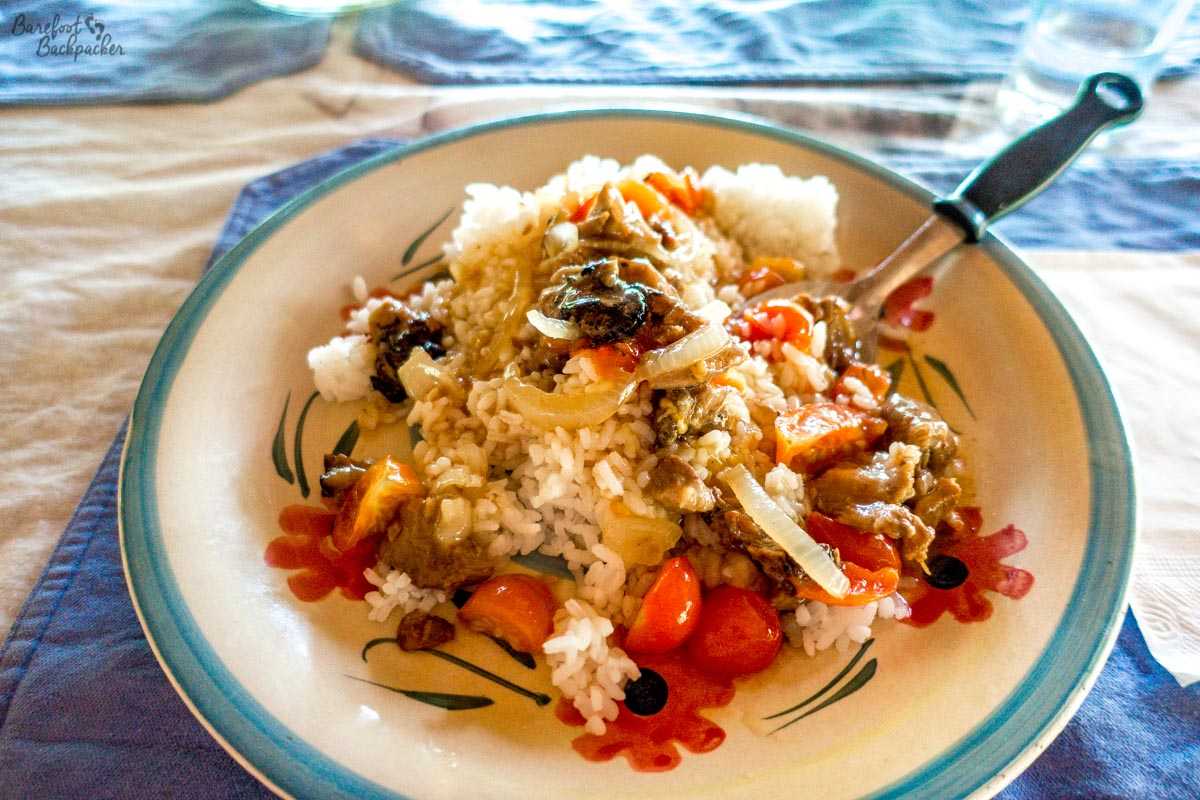
Typical food on Malekula. I hope you like rice.
Washing clothes is a manual activity, using two buckets, a length of wood, a scrubbing brush, and a large amount of ‘elbow grease’. Still, on an island where time is ‘vague’ and where you’re never rushed to do anything, it’s quite a fun way to spend an hour in the morning, knowing that your clothes, hanging out to dry in the sunshine, will be dry by the mid-afternoon.
Life starts at sunrise and dies at sunset. This close to the equator, the days are a similar length all year round – this means it’s light at 6am and dark by 6pm, give or take an hour. Since there are almost no streetlights, and since village life is also ‘family’ based, there is very little to do in the evenings except gaze upwards at the stars and remark to yourself that it’s been quite a while since you last saw the Milky Way. Electricity is often provided by solar energy and may only be available in the evenings for a couple of hours; running water (cold; forget about hot baths!) may or may not be available all the time (otherwise it’s a bucket shower for you) and you’ll need to ask about drinking water. Some villages have a communal tap that comes from the local streams; other places the tap water isn’t that good (or exist at all) and you’ll have to rely on bottles.
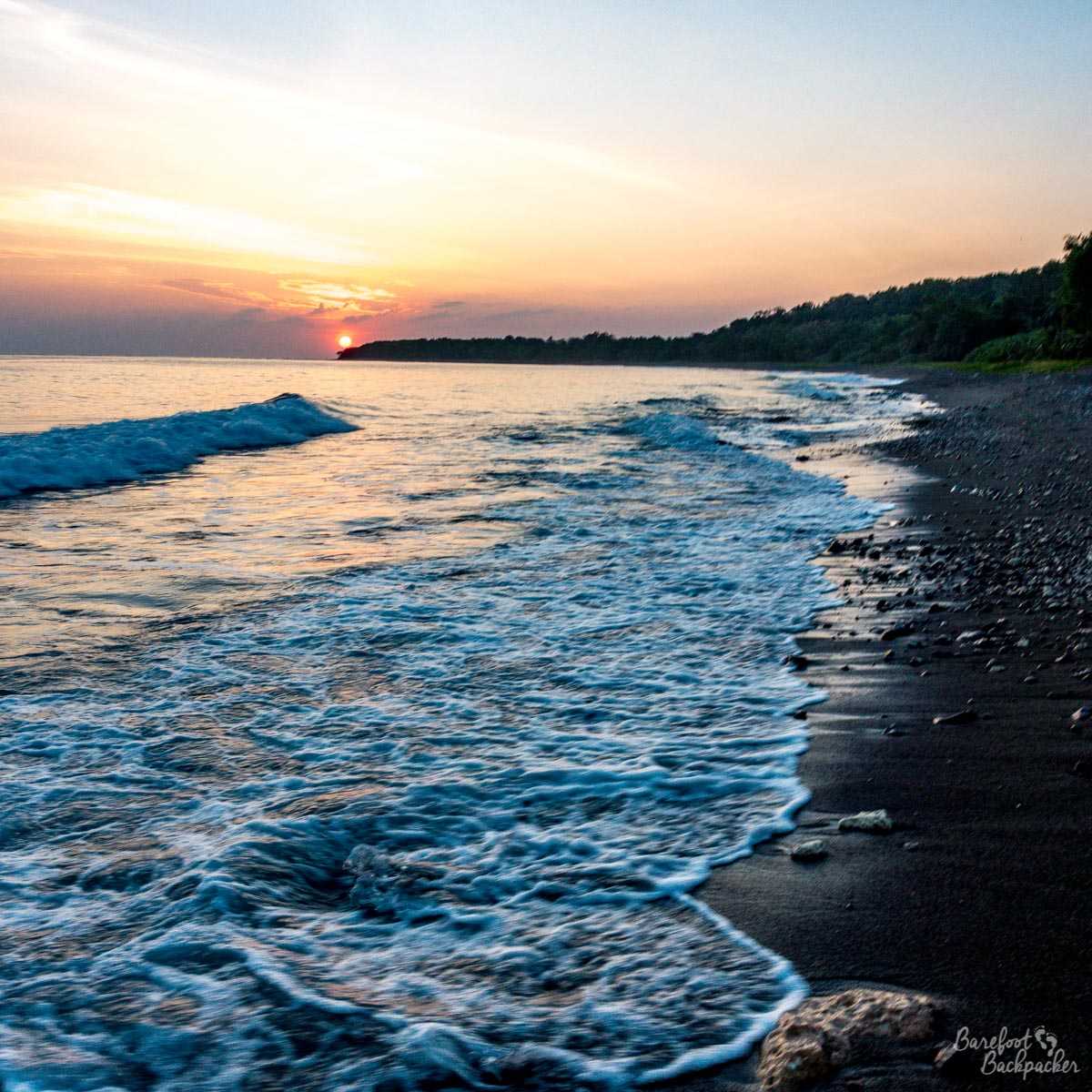
Sunset on the West Coast, on the back-sand beach at the village of Wilack.
All that said however, I’m going to guess that if you’ve read this far and are the sort of traveller who’s intrigued about Vanuatu in the first place, these things won’t bother you in the slightest – in fact you may relish them. It’s a great place for writers to sit and get away from it all; indeed a fantasy novel I’m working on (ha!) pretty much doubled in size during my time in Vanuatu as a whole, most of it on Malekula. The island is definitely worth a few days of your time in any Vanuatu itinerary; don’t just stick to Port-Vila, Luganville, and Tanna!
If you’re interested in knowing more about Malekula, I’ve written a couple of other posts on it:
* The culture and history of the island, including details on cannibalism and the ‘Nambas’ tribes, and
* Trekking on Malekula, specifically a couple of treks on and across the ‘Dog’s Head’ in the north of the island.
If you’re interested to compare with life on another Vanuatan island, I wrote a piece about the northern island of Gaua, including the local ‘water music’ and their passion for religion.
For a more general overview, I recorded an entire podcast on Vanuatu. Give it a listen!
—–
Like this post? Pin it!!

Date visited: 21-28 July 2018.
I stayed at Sunrise Bungalows, booked through Malampa Travel, but paid for by myself so no conflict of interest. I’m not exciting enough to have freebies yet!
The reason for the lack of airport structure at Norsup is that it was destroyed during Cyclone Pam in 2015. There have been no funds to restore it to its former glory. Despite all that, as the author syas, everything works and arrivals and departures happen daily, and are met by local buses which transport you to and from Lakatoro for Vt100. The aircraft in the pic is a DeHavilland Twin Otter – an extremely reliable and comfortable way to fly around the island airports.
Ahh, the cyclone makes sense. I’d heard about it but I didn’t see a lot of other evidence remaining of it – maybe I just wasn’t paying enough attention? :p
Thank you for an insight into Maleluka. I go to Vanuatu each year for the last eight and obviously enjoy my time spent there. Each year i base myself in Port Vila as I have made good friends on Efate and have ventured out to a couple of others. This year (three days left) I visited Tanna and of course the volcano, Mount Yasur. Magnificent. A couple of years ago my daughter and I visited Ambae and did an adventurous and extremely arduous climb up their volcano, Manaro. The most memorable day of my life. Six months after is when the entire Island was evacuated when it erupted. Next year I plan on visiting Maleluka but with a local so I will be in good hands. Anyway thanks for your post and will let you know my thoughts on the Island. Lastly the airport looks to be the twin of the one on Ambae, including the barrow.
There’s probably not much difference between many of the airports tbh; all you need is a strip of land and some kind of concrete shelter. I never made it to Tanna, but I’m sure I will one day – I want to visit Erromango in the far south as it sounds interesting and would be a good compare/contrast with Gaua in the North, so Tanna would be a logical stopover. I didn’t go to Ambae either because of the eruption. Thank you for reading 🙂